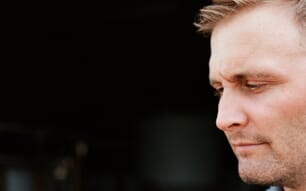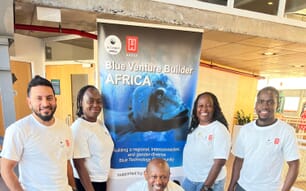Identity
Acipenser baerii Brandt, 1869 [Acipenseridae]
FAO Names: En - Siberian sturgeon; Fr - Esturgeon de Sibérie; Es - Esturión de Siberia

Biological features
Spiracle present. Snout and caudal peduncle subconical. Gill membranes joined to isthmus. Mouth transverse and lower lip with a split in the middle. The barbels are either smooth or slightly fimbriate. The length of the snout is highly variable (33.3-61 per cent head length). 20-49 gill rakers fan-like, each terminated by several tubercles. D:30-56. A:17-33 fin rays. 10-12 dorsal scutes; 32-62 lateral scutes; 7-16 (20) ventral scutes. The scutes of young specimens are sharply tipped, but no in adult ones. Numerous small bony plates are scattered between the rows of scutes. There is a great variability in the colouration: from light grey to a dark brown on back and sides, and from white to yellowish on the underside.
Profile
Historical background
Since the 1940s, this species has attracted considerable attention because of its plasticity; in the 1950s, tests were carried out to introduce the species into various open stretches of water (Baltic Sea) or closed areas (lakes). The farming of this species began in the former USSR in the 1970s. It was also at this time that the first individuals (from parents that had originated in the River Lena) arrived in France, as a biological model in the context of a Franco-Soviet scientific cooperation programme. Since then, the dispersal of the species has accelerated and, in addition to the Russian Federation (its country of origin) it is known to be present in Europe (Belgium, France, Italy, Germany, Hungary, Poland, and Spain), America (United States, Uruguay) and Asia (China). It is highly likely that it is also present in other countries, at least in an experimental capacity. The species has also been the subject of hybridisation.
Few companies cover the entire production cycle and market all possible products. Some only produce eggs and/or alevins; others specialise in producing the fish for meat; in many western countries, caviar has become the main purpose of rearing sturgeon.
Main producer countries
The map shown below is constructed from FAO statistical data for this species. Farming activities also occur in many other countries, including the Russian Federation, Italy, Germany, Poland, Spain, the United States of America, China, Belgium and Hungary. However, the production from these activities are included in the FAO statistical category 'sturgeons nei', partly because the countries concerned do not state the exact species farmed and partly because some of the production is from hybrids.
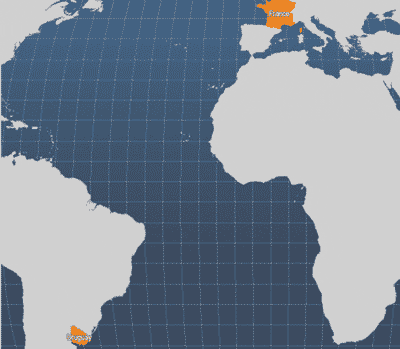
(FAO Fishery Statistics, 2006)
Habitat and biology
The species is present in all hydrographic basins from the Ob-Irtych basin to the Kolyma; thus it can be found in the Ienisseï, Khatanga, Lena and Indigirka basins. Populations are also present in the hydrographic system of Lake Baïkal. Three sub-species have been distinguished: Acipenser baerii baerii in the Ob basin, Acipenser baerii stenorrhynchus from the Ienisseï as far as the Kolyma and lastly, Acipenser baerii baicalensis in Lake Baïkal.
Large annual catches (as much as several hundred tonnes) were taken, in decreasing order, in the basins of the Ob, the Ienisseï and the Lena rivers at the beginning and in the middle of the twentieth century. Siberian sturgeon is a freshwater species, but it migrates long distances in the rivers where it is found. Unlike other sturgeon, the spawning stock continues to feed during the period of generative migration. Puberty occurs late, as growth is slow in these cold conditions, between 10 and 17 years for males and 12 to 20 years for females, depending on their origin. The adults of both sexes possess Muller canals. The oviduct takes up about one-third of the abdominal cavity and is linked with the Muller canal via a unidirectional valve. This species belongs to the group of sturgeons with a chromosome number of around 250.
The species can live in temperatures that range widely, from only 1°C to 25–26°C. It is fairly resistant to low oxygen content but does not put on weight in such conditions.
Production
Production cycle
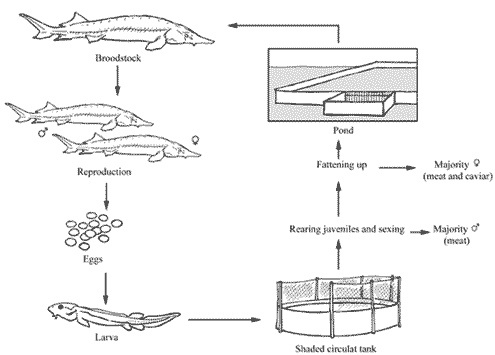
Production systems
Seed supply
Males and females are kept separately, because of the different products that are sold from sturgeon rearing. The absence of sexual dimorphism led to the development of several methods of sexing immature fish: biopsy and observations, dosage using plasmatic 11-ketotesterone, and ultrasound scans. This is normally carried out at about 3 years. The males are then sold. The females are kept and grown on for several years until they are mature enough to produce caviar. They are then harvested for meat. Some may be kept for broodstock, for future reproduction.
Broodstock
The Siberian sturgeon is a gonochoristic species. Rearing conditions in farms are generally more favourable than the natural conditions where they originate, and puberty occurs considerably earlier, at about 6 years old for the males and 7 years old for the females in generally temperate conditions.
The management of the broodstock is complicated by the fact that the females do not ovulate every year (with only a very few exceptions) and they are not all synchronous. Therefore, for a given cohort, the number of mature females obtained annually can vary between 35 to 63 per cent of the stock. By controlling the temperature of the water, it is possible to obtain eggs over an extended period, namely December–May.
Vernalisation and hormone stimulation are carried out to obtain good quality sexual products. Various types of hormone can be used, including extracts of sturgeon or carp pituitary, or Gonadotrophin Releasing Hormone analogues (GnRHa). The main problem is being able to determine the right moment to administer the hormone injection, in other words, to choose the animals in the most suitable physiological state. The history of the stock, the size of the ovarian follicles, their homogeneity, their appearance, the position of the germinal vesicle and the in vitro maturation competence of the ovarian follicles are useful criteria to look at when making this decision.
Eggs are harvested either by repeated abdominal massaging at two-hourly intervals or (better still) by carrying out a small laparotomy. Several stitches are inserted to close the opening. During the operation, the animal receives a stream of water through the mouth. Harvests vary from between 8 to 14 per cent of the female live weight. The eggs are often ovoid in shape, brown and/or dark green in colour, with their longest measurement being 3.0 to 3.8mm. There are between 35 and 45 eggs per gram and they have several micropyles.
Males frequently produce several tens of ml of sperm, which is collected using a small flexible tube introduced carefully into the genital orifice. Fertilisation occurs using techniques perfected several decades ago.
Hatchery
The fertilised eggs must undergo an anti-adhesive treatment to prevent them clumping together during incubation. Treatment in an aqueous clay suspension is very often carried out, and sometimes milk is used. After rinsing, the eggs are placed in incubators, usually Zoug jars or McDonald jars.
Embryonic development takes place in about 6 days at between 13 to 14°C. Normal larvae can then be easily selected, because of their positive phototropism.
Nursery
The order and duration of the different phases of larval behaviour are clearly defined at 17–18 °C. Under these conditions, the larvae should be given their first food between the 9th and 11th days after hatching, in other words after the phase of endogenous alimentation has completely finished. Excellent results are obtained (growth and survival rates) by giving them composite food straight away. Troughs (200×50×40cm; length, width and depth) are well suited for rearing larvae in the course of the first four weeks; mean weight at 17 to 18°C being about 500mg. Water depth is 15 to 20cm. Later circular tanks (F=2m) might be used for fingerlings.
On-growing techniques
The Siberian sturgeon can be reared using a wide variety of systems: raceways, circular tanks, large pools in intensive farming, ponds and cages. Cages are commonly used in Russia and Uruguay. Tests have also been carried out to rear sturgeon in a recirculation system.
In ponds, a density of 1.5 to 3.0kg per square metre can be reared without oxygenation. Densities of 50 to 80kg per square metre have been reported if added oxygen is provided. Siberian sturgeon can endure higher temperatures (25–26°C) on condition that two precautions are taken simultaneously, namely absence of food and the provision of a high level of oxygen. Sturgeons prefer shade and avoid direct light. Submerged vegetation should be avoided because it may trap the fish in a maze of weeds.
Feed supply
In Western Europe, the feed used is mainly based on commercially produced granules, which are often very similar to those used in trout farming. Extruded pellets with better water stability are more suited to the feeding behaviour of sturgeon. Feeding rates in Western Europe are rarely higher than 1.0 to 1.5 per cent of the biomass, or even less for larger individuals but higher rates (up to around four per cent) have been noted in the Russian Federation. In pond rearing, the places where food is distributed are varied to avoid accumulations of sediment around the distribution zones.
Harvesting techniques
Fish are concentrated by netting. Then they are either caught with landing net (small and moderate size) or handling for large individuals.
Handling and processing
With regard to caviar the main processing steps are: female selection, holding in running water for a while, stunning, gutting, removal of ovaries, cooling, screening, rinsing, weighing, salting, draining, canning, labelling and preservation. Each step is of importance, the first (female selection) being the key one.
Production costs
No information supplied.
Diseases and control measures
There is currently no particular pathology associated with this species. However, it is sensitive to various bacteriosis [yersiniosis, vibriosis and myxobacteriosis (now called flavobacteriosis)]. Treatments are available to control the development of these diseases and vaccinations enable preventive action to be taken. At the larval stage, good food management is likely to decrease these risks by preventing the development of cannibalism. A very small percentage of animals present deformities, which can eventually lead to a loss of balance, difficulty in feeding and ultimately death. The origin of this pathology, which is not specific to this species, remains unknown.
Suppliers of pathology expertise
No information supplied.
Statistics
Production statistics
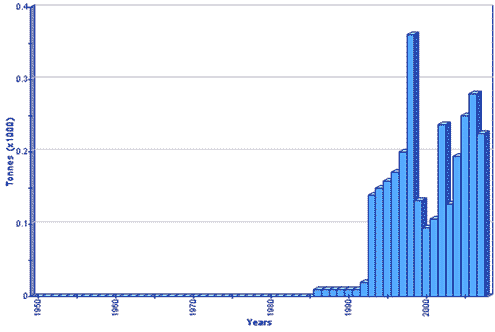
(FAO Fishery Statistic)
Though there are no reliable statistics, the trend is towards increased production. The production from these activities might be included in the FAO statistical category 'sturgeons nei', partly because the countries concerned do not state the exact species farmed and partly because some of the production is from hybrids.
In 2003, some unofficial and most accurate estimates for the various Siberian sturgeon products are provided in the table shown below.
| Estimated production of sturgeon and products (2003) | |||
|---|---|---|---|
| Country | Production of meat (tonnes) | Production of caviar (tonnes) | Production of eggs (0) and alevins (a) |
| China | 3501 – 2,2002 | - | - |
| Russia | 7501 and 5003 | – | 5.106 (a) and 20.106 (0) |
| France | 350 | 7 | Large potential |
| Poland | 180 | - | Large potential |
| Germany | 120 | 2 | 4.106 |
| Italy | 100 | – | 350,000 (0) |
| Belgium-Netherlands | 20 | 2 | – |
| Spain | 6 | 0.4 | 30, 000 (a) |
| Ukraine | 5 | - | – |
| Uruguay | 1 | - | 0 |
| Hungary | 0 | – | 5.106 (0) |
| US | 0.5 | - | – |
| Total | 1,7001 – 4,4002 | 12 | – |
Market and trade
Marketed sturgeon products vary considerably, according to the country. The fish may be sold live (between one and two kilos in China), or whole, filleted or smoked. There is a market for fertilised eggs and alevins for rearing purposes. Alevins are also produced for restocking (Russian Federation) and for aquarists. Finally, juveniles are used for the stocking of lakes for recreational fishing. Fish farms can obtain €3 to 4 per kilo in western and central Europe for fish of a size suitable for human consumption, while in Russia and China the value seems to be higher (€8 to 11 per kilo).
Status and Trends
The international caviar market, estimated during the 1980s to be between 200 and 300 tonnes per year, appears to have decreased due to a lack of interest on the part of air transporters. Competition between the various caviar producers will soon increase.
Main issues
The wide dispersal of the species has resulted in some animals escaping into zones that are far distant from their original habitat: the Baltic and North Seas, the Gironde-Garonne-Dordogne basin in France and the Rio Negro in Uruguay. It is interesting to note that, despite the intensive restocking that took place in some parts of the Baltic Sea during the 1960s, the species does not seem to have become established there; one reason for this is probably the considerable ease with which it can be caught.
The construction of dams, overfishing and pollution are responsible for a major deterioration in the state of natural populations, which are considered as vulnerable or endangered. Globally, most sturgeon species are threatened, and the Siberian sturgeon is no exception.
The Siberian sturgeon does not have a clear international market identity; it is in competition with other sturgeon species that have a greater growth potential and/or an established commercial image.
Responsible aquaculture practices
In order to preserve the species and protect production based on farmed animals, a form of legal recognition and a statute for farming them should be established. The Siberian sturgeon is non-indigenous almost everywhere. However, regulations governing the rearing of non-indigenous species vary from country to country, leading to unfair competition.
References
- Birstein, V.J., Bemis, W.E. and Waldman, J.R. 1997. The threatened status of acipenseriformes species: a summary. Environmental Biology of Fishes, 48:427-435.
- Bronzi, P., Rosenthal, H., Arlati, G. and Williot, P. 1999. A brief review on the status and prospects of sturgeon farming in western and Central Europe. Journal of Applied Ichthyology, 15:224-227.
- Chebanov, M. and Billard, R. 2001. The culture of sturgeons in Russia: production of juveniles for stocking and meat for human consumption. Aquatic Living Resources, 14:375-381.
- Dettlaff, T.A., Ginsburg, A.S. and Schmalhausen, O.I. 1993. Sturgeon fishes. Developmental biology and aquaculture. Springer-Verlag, Berlin, Germany, 300 pp.
- Gessner, J., Debus, L., Filipiak, J., Spratte, S., Skora, K.E. and Arndt, G.M. 1999. Development of sturgeon catches in German and adjacent waters since 1980. Journal of Applied Ichthyology, 15:136-141.
- Gisbert, E. and Williot, P. 2002. Advances in larval rearing of Siberian sturgeon. Journal of Fish Biology, 60:1071-1092.
- Ruban, G.I. 1997. Species structure, contemporary distribution and status of the Siberian sturgeon, Acipenser baerii. Environmental Biology of Fishes, 48:221-230.
- Sokolov, L.I. and Vasil'ev, V.P. 1989. Acipenser baeri Brandt, 1869. In J. Holcik (ed.), The freshwater fishes of Europe: general introduction to fishes acipenseriformes. AULA-Verlag Wiesbaden, Germany. pp. 263-284.
- Williot P. 2002. Reproduction. In R. Billard (coord.), Esturgeons et caviar, pp. 63-90. Lavoisier Tec & Doc, Paris, France.
- Williot, P. and Bourguignon, G. 1991. Production d'esturgeon et de caviar, état actuel et perspectives. In (P. Williot Ed), Acipenser, pp. 509-513. Cemagref Editions, Antony, Paris, France.
- Williot, P. and Sabeau, L. 1999. Elevage d'esturgeons et production de caviar: exemple de l'esturgeon sibérien (Acipenser baerii) en France. Compte Rendu Académie Agriculture de France 85(8), séance du 27 nov. 1999:71-83.
- Williot, P., Sabeau, L., Gessner, J., Arlati, G., Bronzi, P., Gulyas, T. and Berni, P. 2001. Sturgeon farming in Western Europe: recent developments and perspectives. Aquatic Living Resources, 14:367-374.
November 2009



